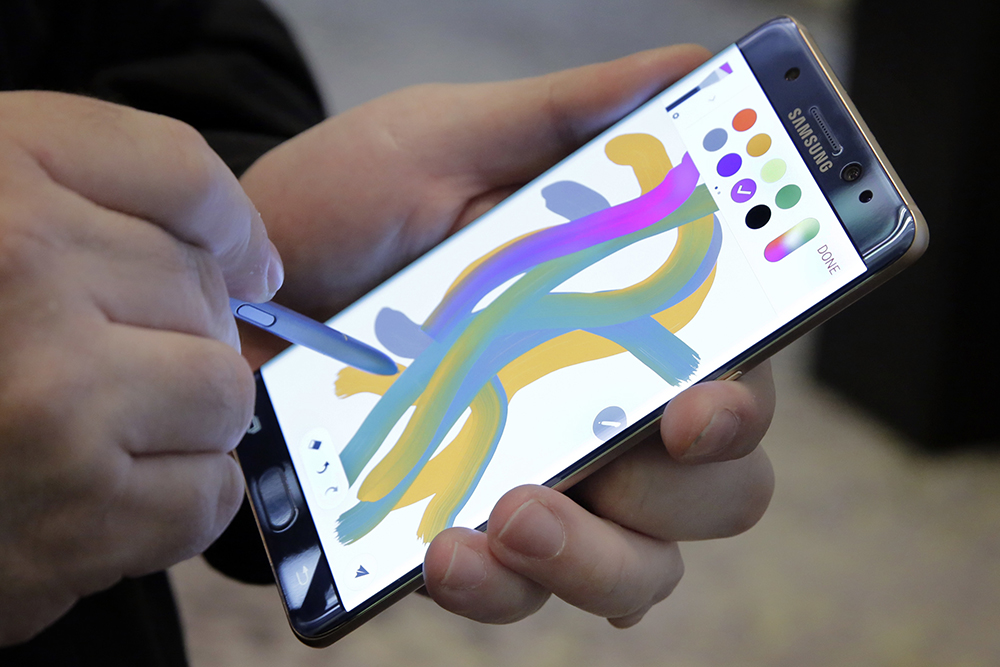Samsung is suspending production of its Galaxy 7 Note replacement phones after more reports of fires, according to news reports in Korea and the U.S.
Samsung has not commented on the stories attributed to unnamed sources published by Korea’s Yonhap News Agency and the Wall Street Journal and did not immediately respond to an inquiry from The Washington Post.
Meanwhile, two U.S. carriers, AT&T and T-Mobile U.S. are halting sales of the smartphones.
“While Samsung investigates multiple reports of issues, T-Mobile is temporarily suspending all sales of the new Note7 and exchanges for replacement Note7 devices,” said a press release from T-Mobile.
“Based on recent reports, we’re no longer exchanging new Note 7s at this time, pending further investigation of these reported incidents,” an AT&T spokesperson told Forbes.
Korea’s Yonhap News Agency reported eight cases of fires in replacement phones, 5 in the U.S., one in South Korea and another in Taiwan.
Yonhap said the incident in Korea was determined by a laboratory test to have been caused by a “strong external shock or being squashed.”
It quoted an unnamed source at a Samsung supplier saying production was being suspended.
The Verge reported that one of the five U.S. fires occurred when a Houston, Tex. man was at lunch with his daughter who had placed the phone on a dining table. Daniel Franks told The Verge that his 8-year-old often plays Minecraft on the phone and wondered what could have happened if she had been holding it or if it had been in his pocket.
A Samsung phone, a replacement model for the defective ones, caught fire and grounded a domestic flight on Wednesday in Louisville. There were no injuries but the Southwest flight to Baltimore was evacuated.
And a Kentucky man told WDRB TV that he “woke up Tuesday morning because of a hissing sound” and discovered his bedroom filled with smoke coming from a replacement Galaxy 7 a week after he got it.
“The phone is supposed to be the replacement,” he told the station, “so you would have thought it was safe. It wasn’t plugged in or anything, it was just sitting there.”
Samsung’s struggles with its batteries are turning out to be one of the great product rollout debacles in recent memory.
On Sept. 17, the U.S. Consumer Product Safety Commission issued a recall of Samsung Galaxy Note 7 phones because their batteries displayed an unfortunate inclination to catch fire and, at times, explode. (The company had issued a voluntary recall on Sept. 2.)
Though advertisements claimed the phones were “designed to be a key that opens the door to new experiences on the go,” they have proved to be liability since their Aug. 19 release.
At the time, the commission stated that the phone’s batteries were linked to “26 reports of burns and 55 reports of property damage, including fires in cars and a garage.”
In one instance, a car was “fully engulfed in flames” after a phone caught fire. In another, a man sued the South Korean company after allegedly suffering severe burns on his right thigh and left thumb when his phone exploded.
It then began a replacement program for all phones sold prior to Sept. 21.
The batteries can explode when the anode (an electrode filled with positively charged ions) and the cathode (an electrode filled with positively charged ions) make contact. As The Post’s Andrea Peterson explained:
Like pretty much all batteries, lithium ion batteries work by storing energy and releasing it through controlled chemical reactions. A lithium ion battery has two electrodes – places where electricity can enter or leave the battery. One electrode, called the anode, is filled with negatively charged ions. The other electrode, called a cathode, contains positively charged ions and lithium. You can think of the anode and the cathodes like the plus and minus signs you often see on batteries.
In Samsung’s case, it appears a manufacturing error caused that separator to fail.
Send questions/comments to the editors.



Success. Please wait for the page to reload. If the page does not reload within 5 seconds, please refresh the page.
Enter your email and password to access comments.
Hi, to comment on stories you must . This profile is in addition to your subscription and website login.
Already have a commenting profile? .
Invalid username/password.
Please check your email to confirm and complete your registration.
Only subscribers are eligible to post comments. Please subscribe or login first for digital access. Here’s why.
Use the form below to reset your password. When you've submitted your account email, we will send an email with a reset code.